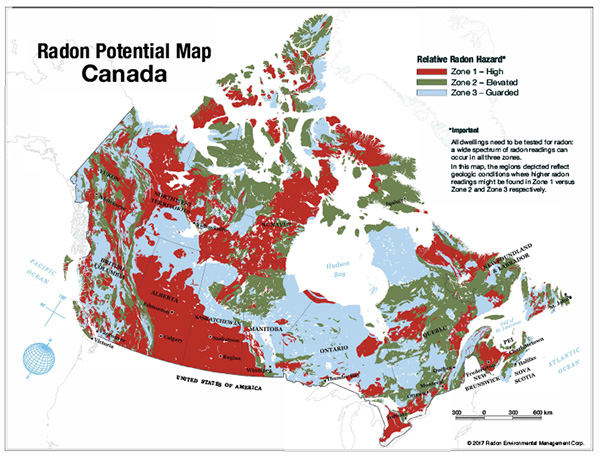Is It Safe to Get a Residence With Raised Radon Levels?
Radiation Protection
Is radon really bad for you?
Breathing radon over time increases your risk of lung cancer. Radon is the second leading cause of lung cancer in the United States. Nationally, the EPA estimates that about 21,000 people die each year from radon-related lung cancer. Only smoking causes more lung cancer deaths.
The USA EPA has actually established the radon degree of 4.0 picocuries per litre to be the action degree for radon gas in homes. Significance, act to minimize radon levels that are higher than 4 picocuries per liter. Keep in mind that radon risk complies with a linear contour of the time vs the amount revealed to it plus the added element that each person might be basically at risk to radon relevant cancer.
The Additional hints EPA sets the degree of unsafe radon gas direct exposure at or over 4 pCi/L. It's recommended that you undergo reduction efforts to lower direct exposure if your house has radon gas levels exceeding this action degree. You'll absolutely need mitigation as well as may need much more extensive restorations to seal off the resource of the gas if screening exposes a much greater level.
Is radon mitigation really necessary?

When radon gas enters the body, it exposes the lungs to small amounts https://mix.com/lynethc37a/posts?modal=1&url_id=608725586147303424 of radiation. In small quantities, experts say this is harmless. However, in persistent exposures or larger quantities, radon can damage the cells of the lining of the lungs, increasing a person's chance of developing lung cancer.
EPA prohibited ground degree discharge of radon largely as a result of the potential for re-entrainment of the gas into your home and also because of the opportunity of kids being subjected to high radon degrees. The focus of radon gas at the discharge factor can be tens of thousands of picocuries per minute.
- Lung cancer risk rises 16% per 2.7 pCi/L increase in radon direct exposure.
- Radon gas is a naturally-occurring by-product of the radioactive degeneration of Uranium in the dirt.
- Relying on your geographic location, the radon degrees of the air you take a breath outside of your house might be as high as 0.75 pCi/L.
- The United States EPA has actually put it clearly, stating, "Any radon exposure has some danger of triggering lung cancer cells.
Unless you have a high price of air circulation relocating with your residence in all times, radon can accumulate inside the house and get to dangerous levels. With the lowest survival rate amongst some of the most common cancers cells, lung cancer cells is among the most feared diseases in the nation.
What to Understand about the Dangers of Radon Gas in your house

What are the symptoms of radon in your home?
If a person has been exposed to radon, 75 percent of the radon progeny in lungs will become "harmless" lead particles after 44 years. When an alpha particle damages a cell to make it cancerous, the onset of lung cancer takes a minimum of 5 years but most often 15 to 25 years, and even longer.
Radon gas gets in houses from below, via fractures in the foundations and floorings. With a lot of house owners recognizing fairly little regarding radon gas as well as its threats, there's lots to find out prior to dealing with the issue. Recognizing the extent of radon exposure, the parts of the country with the highest levels of gas manufacturing, and also reduction expenses will certainly prepare you for handling the obstacle. This is just one of one of the most generally asked questions after, "What is radon screening?" The soil under your home isn't an arbitrary mix of dirt. You can not inform just by looking, however there are some contaminated aspects that make up common minerals and rocks discovered mixed right into the dirt throughout the nation.
How long does it take for radon to cause cancer?
Fact: You will reduce your risk of lung cancer when you reduce radon levels, even if you've lived with an elevated radon level for a long time. Keep in mind that radon levels below 4 pCi/L still pose some risk and that radon levels can be reduced to 2 pCi/L or below in most homes.
